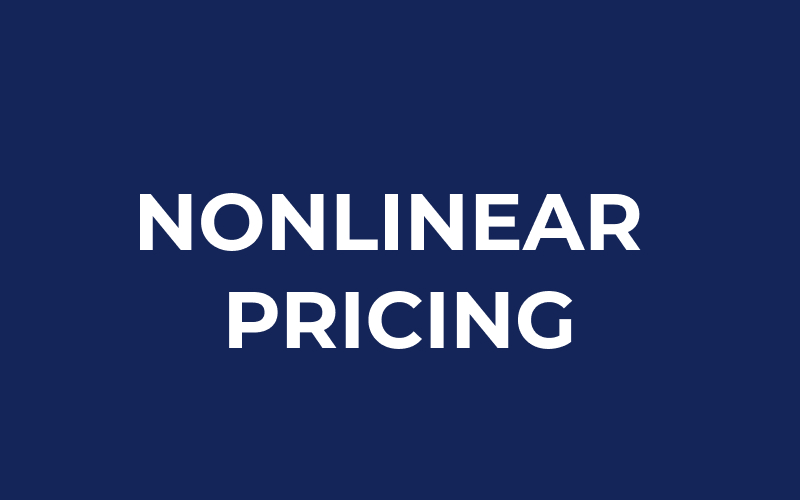
Nonlinear pricing
Nonlinear pricing is a strategy that takes into account a variety of factors beyond the cost of a product or service. These can include the customer’s willingness to pay, the value they place on the product, and the competition. The goal of non-linear pricing is to find the optimal price that maximizes revenue and profits while also considering the customer’s perception of value.
Examples of non linear pricing
One example of non-linear pricing is dynamic pricing. This strategy adjusts prices based on supply and demand. For instance, an ecommerce company might increase the price of a product during high demand periods and lower it during low demand periods. This helps the company to balance supply and demand while also maximizing revenue.
Another example is value-based pricing, where companies set prices based on the perceived value of a product to the customer. For example, luxury goods and premium services often use value-based pricing because the perceived value to the customer is high. The price is set based on the value that the customer places on the product, not on the cost of production.
Non-linear pricing can also be used in retail to create bundles or packages. For example, a retailer might offer a bundle of products at a discounted price to encourage customers to purchase more items. This type of pricing strategy can increase sales and revenue by encouraging customers to purchase more items.
In ecommerce and retail businesses, nonlinear pricing can impact pricing in the following ways:
Quantity discounts: Businesses can use nonlinear pricing to offer discounts for larger quantities of a product or service, encouraging bulk purchases and increasing sales.
Time-based pricing: Businesses can use nonlinear pricing to offer different prices for a product or service based on the time of day, week, or year, such as charging higher prices during peak hours or seasons.
Location-based pricing: Businesses can use nonlinear pricing to offer different prices for a product or service based on the location of the consumer, such as charging higher prices in tourist areas or urban areas.
Personalized pricing: Businesses can use nonlinear pricing to offer personalized prices for a product or service based on the consumer’s purchasing history, demographics, or other factors.
Sales and promotions: Businesses can use nonlinear pricing as part of their sales and promotions strategy to create a sense of urgency and encourage consumers to make a purchase.
Summmary
Nonlinear pricing refers to the practice of setting different prices for a product or service based on factors such as quantity, time, or location. In ecommerce and retail businesses, nonlinear pricing can impact pricing by offering discounts for larger quantities, charging different prices based on time and location, offering personalized prices, increasing sales and predicting the long-term impact of changes in price. It is a strategy that can be used by ecommerce and retail businesses to increase sales and personalize pricing for customers.


